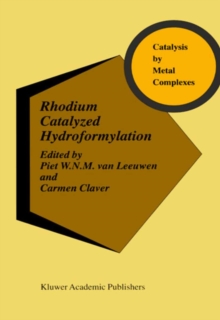
Advances in Catalytic Activation of Dioxygen by Metal Complexes PDF
Edited by Laszlo I. Simandi
Part of the Catalysis by Metal Complexes series
Description
The subject of dioxygen activation and homogeneous catalytic oxidation by metal complexes has been in the focus of attention over the last 20 years.
The widespread interest is illustrated by its recurring presence among the sessions and subject areas of important international conferences on various aspects of bioinorganic and coordination chemistry as well as catalysis.
The most prominent examples are ICCC, ICBIC, EUROBIC, ISHC, and of course the ADHOC series of meetings focusing on the subject itself.
Similarly, the number of original and review papers devoted to various aspects of dioxygen activation are on the rise.
This trend is due obviously to the relevance of catalytic oxidation to biological processes such as dioxygen transport, and the action of oxygenase and oxidase enzymes related to metabolism.
The structural and functional modeling of metalloenzymes, particularly of those containing iron and copper, by means of low-molecular complexes of iron, copper, ruthenium, cobalt, manganese, etc., have provided a wealth of indirect information helping to understand how the active centers of metalloenzymes may operate.
The knowledge gained from the study of metalloenzyme models is also applicable in the design of transition metal complexes as catalytsts for specific reactions.
This approach has come to be known as biomimetic or bioinspired catalysis and continues to be a fruitful and expanding area of research.
Information
-
Download - Immediately Available
- Format:PDF
- Publisher:Springer US
- Publication Date:11/04/2006
- Category:
- ISBN:9780306478161
Information
-
Download - Immediately Available
- Format:PDF
- Publisher:Springer US
- Publication Date:11/04/2006
- Category:
- ISBN:9780306478161










